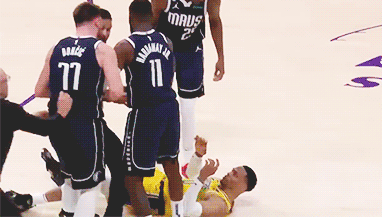#Westbrook
Text







👀😳
#The Sims 4#TS4#Sims 4#Westbrook#They were both super tired#in case you are wondering about the yellow ;)
88 notes
·
View notes
Text

NH train, engine number 1346, engine type 4-6-2
Westbound freight train; 14 cars, 35 MPH. Photographed: near Westbrook, Conn., August 18, 1937.
32 notes
·
View notes
Text
Which Star Trek Resurgence character should I write next for? 🤔 😁
Portal will get his own ongoing series because he's my favourite, but I don't wanna neglect the others^^ so any wishes? 😏



#star trek resurgence#star trek#portal 63#chovak#tylas#carter diaz#westbrook#po edsilar#sarlit amintar#or or or#so many choices
8 notes
·
View notes
Text
somewhere in s2:
Marvyn storms into George’s office.
Marvyn: I think I might have a little crush on Holly…
George: well that’s the understatement of the century but go on.
17 notes
·
View notes
Photo

April 8, 2023
Getting her ready! Westbrook, ME.
4 notes
·
View notes
Photo

Day 157: June 6, 2023
Watching the migration of the alewives at Mill Brook. Westbrook, ME.
2 notes
·
View notes
Text





Bessie inherited her mothers skin tone and hair colour, and her fathers blue eyes. As an infant she had the Sunny trait, she loved being held, loved wake up time and was a snuggly sleeper.
#The Sims 4#TS4#Sims 4#Westbrook#I thought I wanted to play infants#but I forgot how much they cry :\#Anyway speeding thru some of the life stages#So I begin the occult legacy challenge
70 notes
·
View notes
Photo








Luka x Westbrook
Mavericks vs Lakers
4 notes
·
View notes
Video
Westbrook responds to the hate after opting in for his 47 mil contract with the Lakers
14 notes
·
View notes
Text
Buy Verified Cash App Accounts
Buy Verified Cash App Accounts
Try to contain this – Buy Verified Cash App Accounts. The following paragraph become spellchecked and edited for clarity. It is a complete 5 sentences now. A peer-to-peer payment software called Cash App enables customers to transfer and obtain money.

It’s one of the maximum popular fee apps and is much like Venmo. You can use Cash App to pay people lower back for dinner, cut up a rent price, or pay for a carrier. Cash App also has a built-in pockets that you may use to save your cash. Buy Verified Cash App Accounts
#Westbrook#ONE OF THE TIMES#Black Adam#Avatar2#NDSU#Knicks#Top Dolla#Daily Quordle 327#Bulls#No AD#Khalid#John Cena#The FBI#Irregardless#Sapnap#billie#Tucker#CHILDISH GAMBINO#Uncle Howdy#Sorokin#Derrick Rose#Shaun Cassidy#Batman Begins#Year 20#Gunther#Incarnate Word#Mr. Ed#2019 LSU#Bison#South Oak Cliff
2 notes
·
View notes
Text
Kevin, Kyrie, Russell: The Saga Continues....
Blog is back a few days early :)
The NBA is one the best leagues for entertainment especially during the off season. Now although the end of the NBA season was captivated by the Warriors winning their 4th title in 8 years as a team, the trade deadline is taking over the summer. Throughout the season, the biggest topic of discussion was Kyrie with his refusal to be vaccinated , Russell and his lack of looking like he still in his…

View On WordPress
2 notes
·
View notes
Text

#russell westbrook#Westbrook#nba#basketball#chucky#halloween#costume#celebrity#snobshots#paqpics#suptalk#blog archive#magazine#aesthetic#moodboard
2 notes
·
View notes
Text
Copy(right) and Copy(wrong): Defending Fair Use, Protecting Ourselves and Our Students
As Janice Walker notes in Copy-rights and Copy-wrong, it’s so easy to save information and media files nowadays that we forget that what’s easily obtained wasn’t always meant to be publicly available. There are those, like Lawrence Lessig, who would argue that “information wants to be free”, and that we shouldn’t set up a legal system to criminalize things we know people will do anyway and that, ultimately, aren’t harming anyone. But, as much as I might be tempted to agree (so long as we make a distinction between huge conglomerates arbitrarily extending copyright every fifty years and individual artists, creators, and small businesses trying to make a living), I’m more immediately concerned with how I can teach students to protect themselves when using media for class or otherwise. The most common tool given to help prevent students from running afoul of copyright is these four principles for determining fair use:
What is the purpose of the use? Educational, nonprofit, and personal use are more likely to be considered fair than is commercial use.
What is the nature of the work being used? In most cases, imaginative and unpublished materials can be used only if you have the permission of the copyright holder.
How much of the copyrighted work is being used? If a writer uses a small portion of a text for academic purposes, this use is more likely to be considered fair than if he or she uses a whole work for commercial purposes.
What effect would the use have on the market for the original? The use of a work is usually considered unfair if it would hurt sales of the original.
(Maimon et al qtd. Westbrook 167)
Of course, these four principles are only a heuristic, and people can and do face copyright strikes for use that follows all four of these principles when they use material in a way the copyright holder doesn’t like. For that reason, Steve Westbrook argues, we shouldn’t take our concern with copyright to extremes.
By asking for permission to use copyrighted material even when we are reasonably confident it falls under fair use, we forfeit an opportunity to “deny ultimate power to holders of derivative rights, to recover a sense of agency and authority for the writer who relies on appropriative practices, and to counter abuses of copyright law (Westbrook 166).”
Janice Walker offers a few additional, more specific considerations for using copyrighted material in online spaces that can help students build multimedia projects with confidence (Walker 214):
1. Follow guidelines already established for published (i.e., print) sources, if possible. In other words, if you’re using textual materials (i.e. book excerpts or articles) where this would make sense.
2. Point to (i.e., link to) images, audio, and video files rather than downloading them, if possible. While I admire the intent behind this recommendation, to preserve as much context and ‘paper trail’ as possible, I do wonder if it could create accessibility concerns for disabled visitors/viewers/readers/participants, especially those using screenreaders.
3. Always cite sources carefully, giving as much information as possible to allow the user to relocate the source.
4. If in doubt, ask. In doing so, be sure to explain exactly what and how much you intend to use and what you intend to use it for.
She also argues that, as composition teachers, we have a particular obligation to use media mindfully and to educate other teachers and scholars about copyright. In the spirit of taking up that challenge, I reproduce here an account of the rules laid out in order for something to be considered fair classroom use under the TEACH act (Reyman qtd. Walker 209-210):
Use is limited to works that are performed (such as reading a play or showing a video) or displayed (such as a digital version of a map or a painting) during class activities. The TEACH Act does not apply to materials for students’ independent use and retention, such as textbooks or articles from journals.
The materials to be used cannot include those primarily marketed for the purposes of distance education (i.e., an electronic textbook or a multimedia tutorial).
Use of materials must occur “under the actual supervision of an instructor”.
Materials must be used “as an integral part of a class session.”
Use must occur as a “regular part of the systematic mediated instructional activities.”
Students must be informed that the materials they access are protected by copyright.
Further, it remains incumbent on faculty and/or administrators to ensure that the following restrictions are adhered to:
limiting access to material to only those students enrolled in the class;
ensuring that digital versions are created from analog works only if a digital version of the work is not already available;
employing technological measures to “reasonably prevent” retention of the work “for longer than the class session”;
developing copyright policies on the educational use of materials; and
providing informational resources for faculty, students, and staff that “accurately describe, and promote compliance with, the laws of the United States relating to copyright.”
Reading these guidelines in full motivates me to talk to my department head and seek out more detailed explanations from the federal government, because per these guidelines I’m pretty sure uploading a chapter of a copyrighted text for students to read for homework, which I and every teacher I know do all the time, wouldn’t be fair use because it’s not “under the actual supervision of an instructor”.
#week 7#copyright#TEACH act#fair use#walker#westbrook#lessig#copyrights and copywrongs#remix making art and commerce thrive#what we talk about when we talk about fair use
0 notes

